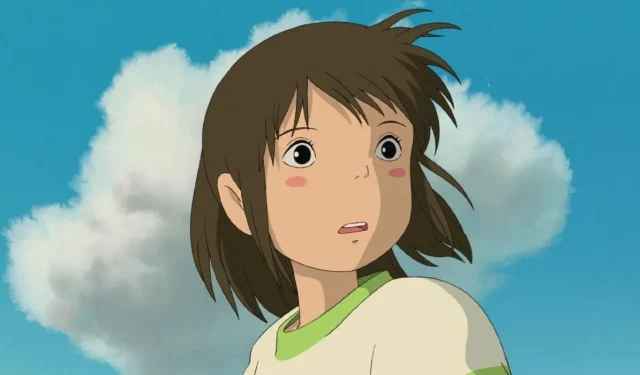Note: Some of the images included in this article are non-graphic but may still be distressing to some readers.
Controversy Surrounding ChatGPT’s Studio Ghibli Image Trend
A robust debate has emerged over the recent trend of generating Studio Ghibli-inspired images using ChatGPT’s updated features, particularly its image generation capabilities under the GPT-4o model. The unexpected surge in popularity led to OpenAI’s GPUs overheating due to excessive usage, highlighting the immense interest in both the Studio Ghibli aesthetic and AI-generated art. From memorable scenes to popular memes, users are increasingly creating content reminiscent of Ghibli’s artistic style. This rise in interest has sparked controversy, particularly in light of co-founder Hayao Miyazaki’s critical views on AI’s role in art creation.
The Dark Side of Ghibli-AI Integration
The trend has spiraled beyond harmless creations, as some recent outputs have raised significant ethical concerns. A notable instance occurred when the official White House account posted a Ghibli-style illustration depicting Virginia Basora-Gonzalez, a fentanyl trafficking convict, during her arrest by ICE. In another troubling development, Charlie Warzel shared an image created by X employee Zach Warunek, recreating a scene from the Columbine High School massacre in the Ghibli aesthetic. Such controversial applications of the image generator fuel ongoing discourse about its implications and responsibilities.
https://t.co/PVdINmsHXs
pic.twitter.com/Bw5YUCI2xL
— The White House (@WhiteHouse)
March 27, 2025
OpenAI’s Response to GPU Overload
Fury in Public Discourse
According to OpenAI CEO Sam Altman, the surge in the use of Studio Ghibli-style images has caused the company’s GPU resources to nearly overheat. To manage demand, OpenAI has temporarily imposed usage caps on the free version of the image generator. Despite the backlash surrounding certain controversial image outputs, Altman confirmed that public enthusiasm for the tool remains high, illustrating the complex relationship between innovation and ethical considerations.
(also, we are refusing some generations that should be allowed; we are fixing these as fast as we can.)
— Sam Altman (@sama)
March 27, 2025
Nonetheless, public sentiment is far from unanimous. Numerous users on platforms like X and Bluesky have expressed indignation over the reduction of Studio Ghibli’s rich artistic legacy into a mere stylistic tool, with some high-profile detractors voicing strong opposition to how the studio’s beloved art is being exploited.
With the White House using OpenAi to make racist propaganda in studio ghibli art style there has never been apt scene in anime history.
— Pearlmania500 (@pearlmania500.bsky.social)
2025-03-27T21:18:28.031Z
Hate hate hate the reduction of Ghibli’s output into a vague aesthetic. Even before generative AI, people would talk about “cozy Ghibli vibes”stripped of all context, and now we’re seeing where that gets us.
— Evan Minto (@evanminto.com)
2025-03-27T18:22:32.600Z
Art, Ethics, and the Soul of Ghibli
The ongoing discourse surrounding this trend reflects broader concerns about AI in creative fields. Many creators argue that generative AI diminishes the richness of artistic contributions. Critics, including Brian Merchant, express dissatisfaction with the way AI-generated art disregards the emotional depth and intention inherent in human creativity, echoing Miyazaki’s sentiments that AI art is “an insult to life itself.”
“I was thinking of Miyazaki’s music and his kid characters, like in MY NEIGHBOR TOTORO. I have a belief in the radical poetry of cinema, of the tools of cinema.”
– PETITE MAMAN director Céline Sciamma
pic.twitter.com/vh288gXw2i
— NEON (@neonrated)
March 27, 2025
Notably, film studio NEON recently showcased director Sciamma’s work, drawing inspiration from Ghibli’s My Neighbor Totoro while emphasizing the irreplaceable value of human artistic vision.
AI’s Inability to Replicate Genuine Art
Despite the allure of AI-generated images, many critics maintain that AI fundamentally lacks the ability to capture the essence of human emotion and creativity. The Sietch of Sci-Fi illustrated this perspective by asserting that AI creations can never truly replicate the artistry that defines works like those of Studio Ghibli.
You will never be able to replicate Ghibli, no matter how “good”you think your AI generated trash looks, for it fundamentally lacks all that makes a shot great; emotion, depth, the heart and soul only visible in the labour of an artist who wanted to create *this* specific frame.
pic.twitter.com/78dBQoUHEZ
— The Sietch of Sci-Fi (@TSoS_)
March 27, 2025
In conclusion, while the trend of creating Studio Ghibli-style images through AI tools showcases technological advancements, it also surfaces crucial ethical questions about the integrity of artistic creation. As the debate continues, it remains clear that the legacy of Ghibli is secured not only in its aesthetic but in the profound themes and emotions conveyed through its art.
Source: Various (see above) Source Images


